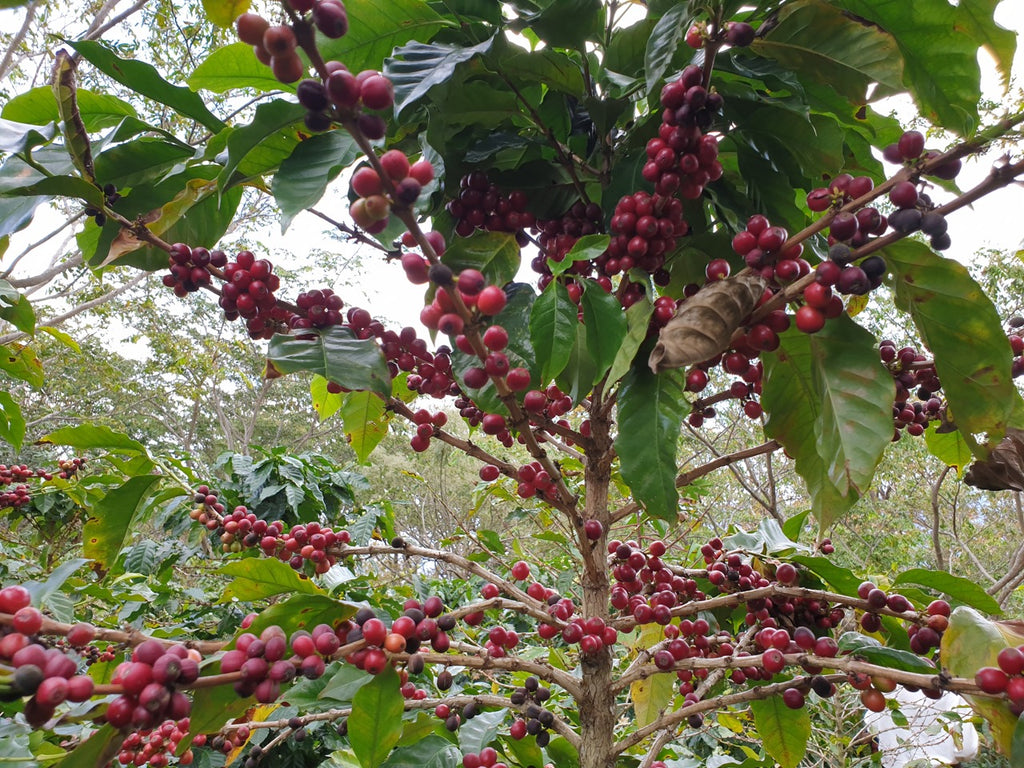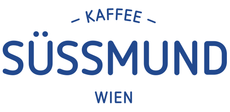What does sustainability mean for coffee?

Ecological sustainability in coffee cultivation
As an organically certified coffee roaster, we primarily purchase organically grown green coffee and are continuously expanding our organic selection. Currently, 75% of our total roasted volume and 11 of our 17 coffee varieties are certified organic. Organic farming ensures that no pesticides or synthetic fertilizers were used in coffee cultivation. Instead, we use only organic materials, mostly from crops grown on the coffee farm.

In organic farming, traditional agricultural techniques make coffee plants naturally more resilient to pests and extreme weather events. The surrounding flora and fauna can continue to thrive and are not deprived of their habitat by synthetic fertilizers. Furthermore, harvest workers are not exposed to chemicals during coffee cultivation or harvesting, and CO2 emissions at the farm level can be significantly reduced.
However, many smaller businesses cannot afford organic certification because it is quite complex and expensive for a single coffee farm. Therefore, coffee may well have been sustainably grown organically even if it is not certified organic. This can only be determined through a direct relationship with the producers.
Fair trade with coffee producers
We trade so-called "direct trade" coffee directly with the producers. Through direct trade, coffee farmers earn significantly higher incomes, ensuring a larger share of the added value remains in the country of cultivation. Harvest workers can be paid more, medical care can be improved, and investments can be made in the education and training of families in often remote regions. Direct and fair trade coffee therefore also contributes to socioeconomic development.

In particular, we are constantly striving to expand our direct trade. In the last 12 months, slightly more than half of our total roasted coffee volume was traded directly with the producers. This is becoming easier with increasing company size and purchasing volume, as importing small quantities is not feasible or uneconomical. Thanks to the last origin trip to Mexico in January 2024, we will soon be able to import a container of green coffee from Chiapas from an indigenous coffee cooperative for the first time. This will soon increase the proportion of directly traded coffee in our product range to over 60%.
Until the green coffee is exported from the country of origin, the growing conditions on the coffee farm and the living conditions of the workers employed there are crucial criteria for sustainability. Organically grown, directly traded coffee is the most sustainable.
Transport and its CO2 emissions
The entire transport process (from the farm to the wet or dry mill and the export port, sea freight, the European port to the roastery) accounts for around 10% of CO2 emissions across the entire value chain. These emissions can be reduced using green, mineral oil-free transport. There are already attempts to equip container ships with large sails to reduce heavy fuel oil consumption during sea transport. Once in Europe, the coffee is usually transported by truck from the port to the coffee roaster. Depending on the shipping company, route, and size of the load, large sections can also be covered by rail, with only the last few kilometers being transported by truck.
Here, politicians, in particular, are called upon to set the framework and provide the infrastructure for the lowest possible emissions in transport. For example, through subsidies for converting to zero-emission truck fleets, a comprehensive network of electric charging stations, or a functioning, extensive rail network within Europe.
We work with freight forwarders who cover the majority of their transport from the port to Vienna by rail and operate the majority of their truck fleets with e-mobility. Within Vienna, we deliver to over 80% of our corporate customers emission-free using e-cargo bikes. We ship webshop orders from private customers CO2-neutrally with Austrian Post.
Production in the coffee roastery
Coffee roasting requires energy to heat the roasting machine. This is usually done using natural gas or liquefied petroleum gas. The sustainability of this form of energy varies depending on the energy provider and the source of the gas. However, there are already some roasting machines that are powered by electricity or hydrogen. So far, only relatively small roasting machines can be powered by electricity, as the energy consumption for coffee roasting is relatively high due to the heat required. Furthermore, for all energy forms, the production of electricity (nuclear power & electricity from coal-fired power plants vs. solar power & wind power) and hydrogen (production is energy-intensive => green hydrogen) must be considered. Compared to other production steps in the value chain, the roasting process accounts for less than 5% of total CO2 emissions . These emissions also need to be optimized, and the production process must be made as environmentally friendly as possible.

As a small coffee roaster, we currently share a liquefied gas-powered roasting machine with two colleagues to ensure optimal utilization of the facility and to share costs. In future investments, the CO2 footprint of the respective energy source will play an even greater role in achieving the most CO2-neutral production possible.
Packaging - Saving and Recycling
The recyclability of coffee packaging is not a given. Various composite materials (mixtures of different plastics or aluminum or paper coatings) and the gluing of paper labels to the coffee bags often make packaging non-recyclable! Packaging made of a single material, usually a plastic (polypropylene PP or polyethylene PE), is best for recycling. This so-called monomaterial can be best processed, recycled, and returned to the circular economy in most industrial waste treatment plants.
We've been devoting a lot of time to this topic in recent weeks and have found a manufacturer who can supply us with a fully recyclable PE monomaterial. We will attach a PE label for each coffee variety to this. We will launch our new, fully recyclable packaging in summer 2024. Furthermore, we already supply many of our corporate customers with refillable, reusable containers, thus avoiding a significant amount of waste.

Conclusion: Sustainability is multifaceted
Many global aspects of the value chain contribute to whether a coffee is "sustainable." We make every effort to pay producers in the country of origin fairly through direct trade wherever possible and higher FOB (Free on Board) prices from retailers. Furthermore, we primarily purchase and roast organically grown coffee or source our green coffee from farms that treat nature with care and consciously avoid pesticides. We continuously strive to avoid or reduce CO2 emissions as much as possible during production and transport. The same applies to waste prevention through reusable containers in the hospitality industry and the development of fully recyclable coffee packaging.
Fundamentally, every corporate decision at Süssmund Kaffee is reviewed for its sustainability. This includes ongoing processes in production and logistics, as well as new material purchases and collaborations with suppliers. Only through ongoing monitoring can deficiencies be identified, solutions developed, and sustainability goals achieved.

Leave a comment